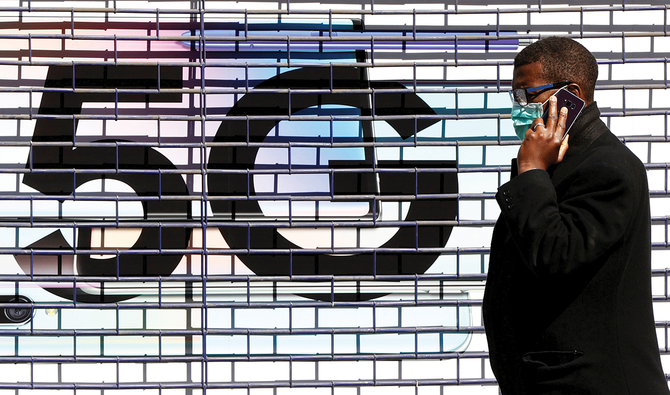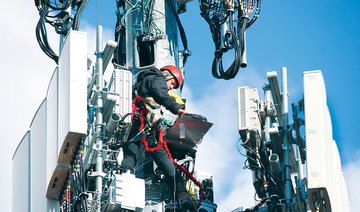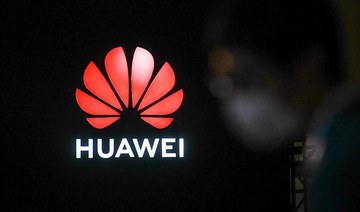STOCKHOLM: The year 2021 could be a do-or-die year for Europe’s efforts to catch up with China and the US in rolling out super-fast fifth-generation (5G) telecoms networks.
The mission to introduce the technology, which ultimately promises internet speeds up to 20 times faster than today, could be crucial to how competitively the continent emerges from the economic ruins of the COVID-19 pandemic.
Mindful of this, the European Union is funneling a fifth of its €750-billion ($914 billion) recovery fund to improve countries’ digital capabilities.
European mobile operators have long been reluctant to start investing in 5G networks, which could support smart factories and self-driving cars, because of a lack of political clarity about whether they must accede to US demands to exclude leading equipment supplier Huawei and other Chinese vendors.
But encouraged by the EU financial commitment to the technology in this area, at a time when the US administration is changing, and fearful of falling further behind globally, the industry is preparing to plow ahead in 2021.
“Europe is, unfortunately, behind,” Pekka Lundmark, chief executive of Finnish network equipment maker Nokia, told Reuters. But the rollout “is accelerating already and in 2021 I think it will gather more speed in most countries.”
Swedish equipment maker Ericsson forecasts Europe’s 5G coverage should grow from around 1 percent of mobile subscriptions across the continent in 2020, to 55 percent in Western countries and 27 percent in central and eastern states over the next five years, underpinning a longed-for economic recovery. Yet it is the mobile operators who must pay companies like Ericsson, Nokia and Huawei billions of dollars for the 5G equipment.
The EU agreed on its rescue package in July, and companies started drawing up digital plans.
“We spent the whole summer since the announcement working to set out tangible projects,” said Jose Maria Alvarez-Pallete, CEO of Spanish operator Telefonica.
A European Commission spokeswoman said the first payments could be made in the summer of 2021.
Among various digital projects, Telefonica calculates the funds could help cover all of Spain with fast fiber-optic internet and extend standalone 5G — capable of giving the highest performance — to around 85 percent of the country by 2025.
Geopolitical grapple
While an individual consumer can use 5G for making calls and browsing the internet, the technology’s main benefit lies in creating new businesses, automating factories and running critical infrastructures like power grids.
Global 5G mobile subscriptions are expected to reach 220 million by the end of this year, with China accounting for almost 80 percent of the total, Ericsson said in a report last month. North America is expected to have 4 percent.
“As with 4G, first movers advantage is huge and countries rolling out 5G early will see most of the innovation,” an Ericsson spokeswoman said.
“Unless Europe moves quickly, it risks lost growth and weakening industrial competitiveness in manufacturing and logistics that could cost billions of euros in new wealth.”
Geopolitics remains a major risk, however.
Pressure from the US on its allies to shun Huawei’s equipment from its networks is unlikely to disappear. The US accuses Huawei of facilitating Chinese spying, allegations denied by the company and Beijing.














